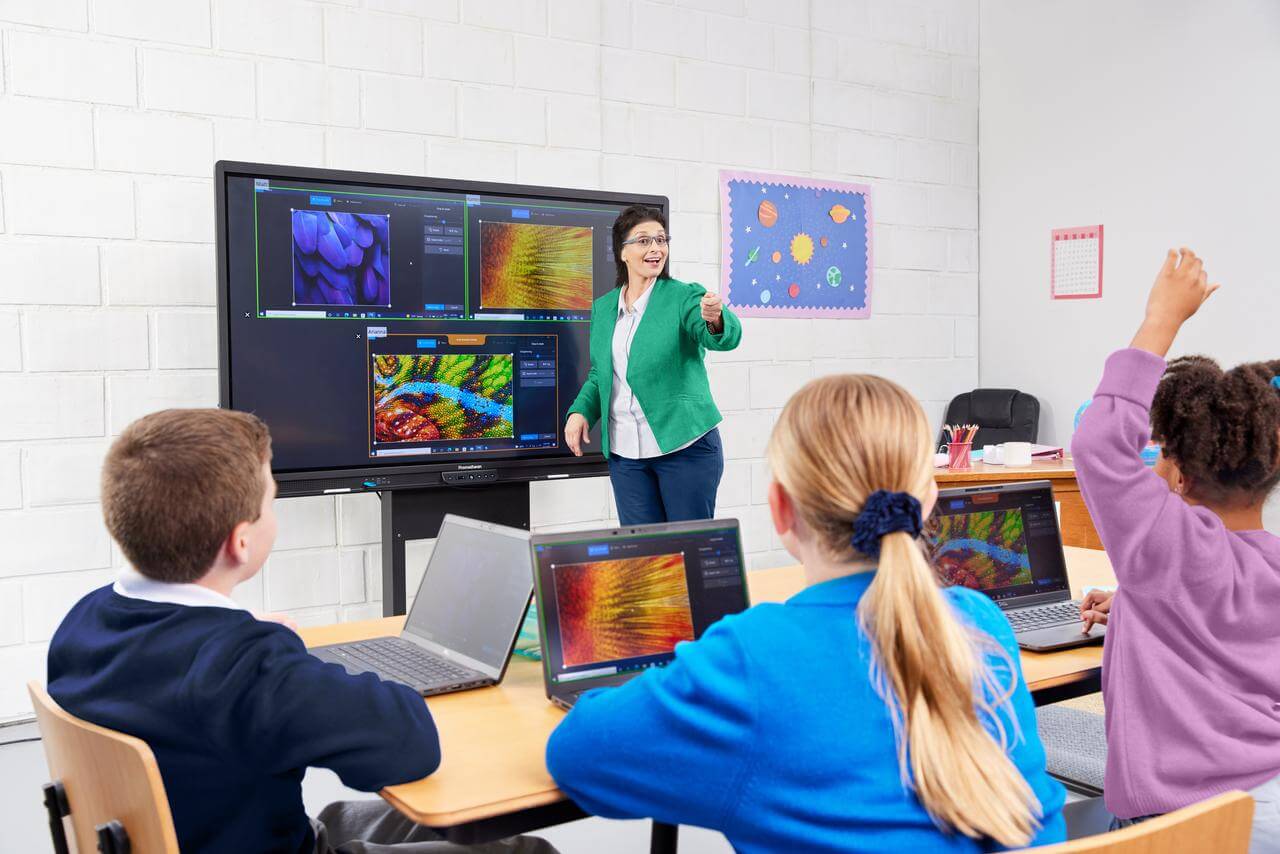Discover the Best Primary Science Tuition Singapore for Your Learning Journey
Discover the Best Primary Science Tuition Singapore for Your Learning Journey
Blog Article
A Comprehensive Overview to the Numerous Discovering Methods in Primary Scientific Research Guideline
The expedition of diverse learning approaches in main scientific research guideline provides an opportunity for instructors to improve student involvement and comprehension considerably. By examining hands-on learning strategies, inquiry-based techniques, and collaborative approaches, we can determine effective techniques that deal with numerous discovering designs. Additionally, the integration of technology and separated guideline plays a critical function in promoting an inclusive setting. The inquiry remains: exactly how can these approaches be efficiently carried out in the classroom to maximize their effect? The solution depends on a more detailed evaluation of each technique and its effects for teaching science.

Hands-On Understanding Techniques
Hands-on understanding techniques play a pivotal function in main scientific research instruction, engaging trainees in energetic expedition and trial and error. These methods allow learners to engage directly with products and phenomena, cultivating a much deeper understanding of clinical principles. By making use of manipulatives, models, and real-life experiments, educators produce an environment where trainees can observe, assume, and check their concepts.
Such methods not only boost understanding yet additionally grow essential reasoning and analytic abilities. When trainees take part in tasks like constructing easy equipments, planting seeds, or performing chemical reactions, they are urged to ask concerns and seek answers via their very own observations. This experiential method assists to demystify complex clinical principles, making them much more relatable and accessible.
Furthermore, hands-on understanding advertises collaboration amongst peers, as trainees commonly work in groups to perform experiments or share findings. This synergy not only enriches their understanding experience however also creates vital social skills. Inevitably, integrating hands-on strategies in primary scientific research direction cultivates a lifelong love of understanding and interest concerning the environment, laying a strong structure for future academic quests in scientific research and beyond.
Inquiry-Based Discovering
Inquiry-based learning is a training approach that motivates pupils to ask concerns, explore phenomena, and build their very own understanding of scientific ideas. This approach shifts the emphasis from typical teacher-led instruction to a much more student-centered experience, where students take the initiative in their academic trip. By promoting interest, inquiry-based understanding promotes much deeper engagement with the product, allowing trainees to discover topics in a significant context.
In technique, this approach typically involves hands-on experiments, observations, and essential reasoning tasks that align closely with the scientific technique. Trainees are motivated to create theories, layout examinations, and assess data, which cultivates important skills such as logical and analytical thinking. The role of the instructor in this structure is to promote expedition, leading pupils via the questions procedure while urging independent idea and partnership.
Additionally, inquiry-based discovering nurtures a sense of ownership over the knowing process, motivating pupils to go after understanding actively. This method not just boosts understanding of scientific concepts yet additionally cultivates a long-lasting love for knowing, gearing up students with the abilities needed to browse an increasingly intricate globe.
Collaborative Knowing Approaches
Collaborative understanding methods equip trainees to involve in meaningful communications with peers, cultivating a shared obligation for their academic end results. In primary scientific research guideline, these techniques urge students to work together to check out clinical principles, solve problems, and carry out experiments (primary science tuition Singapore). By taking part in team activities, students can take advantage of varied viewpoints, permitting richer understanding and retention of clinical knowledge
One key element of collaborative understanding is the focus on interaction abilities. Students should verbalize their thoughts, listen proactively to others, and bargain ideas, all of which are important expertises in both scholastic and real-world contexts. This social communication not just boosts their understanding of clinical concepts yet also promotes teamwork and conflict resolution abilities.
Moreover, joint understanding often leads to raised inspiration and involvement. When pupils see the worth of their payments within a group, they are more likely to take possession of their discovering trip. Teachers can promote this procedure by creating structured group jobs that straighten with curriculum objectives while supplying guidance on efficient cooperation strategies. Overall, including collaborative knowing techniques in main scientific research direction cultivates a vibrant discovering environment that prepares pupils for future academic and social obstacles.
Modern Technology Assimilation in Scientific Research
The integration of innovation in main science direction boosts learning experiences by supplying innovative tools and sources that sustain numerous teaching methods, consisting of collaborative discovering - primary science tuition Singapore. Making use of digital platforms, simulations, and interactive applications permits pupils to involve deeply with clinical concepts, promoting an extra hands-on approach to understanding
Virtual laboratories, for example, enable learners to carry out experiments safely and effectively, promoting inquiry-based knowing. These tools can replicate real-world clinical circumstances, permitting pupils to envision intricate procedures that would certainly be tough to reproduce in a typical class setup. Innovation promotes communication and cooperation amongst trainees, as they can share findings and work with each other on tasks through online systems.
In addition, multimedia discussions and her response educational videos can improve lessons by satisfying diverse learning designs, making abstract concepts more obtainable. Data analysis devices likewise encourage trainees to gather and interpret clinical data, reinforcing critical assuming skills. On the whole, the calculated incorporation of modern technology in main science direction not only improves interaction but likewise prepares students for a highly advanced culture, outfitting them with necessary skills for future scientific undertakings.
Set Apart Direction Approaches
Separated instruction methods are essential for attending to the varied requirements of students in primary scientific research education. These approaches enable teachers to customize their teaching methods to suit varying abilities, rate of interests, and finding out designs within the classroom. By using set apart instruction, teachers can produce a comprehensive environment that fosters engagement and improves understanding of clinical principles.
One effective strategy is to use flexible grouping, which enables trainees to work together with peers at similar skill degrees or with varying viewpoints. This strategy urges peer understanding and advertises essential reasoning. In addition, using options in tasks can encourage pupils, enabling them to choose jobs that resonate with their interests while still meeting curricular purposes.
In addition, integrating tiered tasks is another important method. Deliberately tasks with differing levels of complexity, instructors can make certain that all trainees are properly challenged, despite their efficiency. Using developmental assessments to assess recognizing additional makes it possible for instructors to change their educational methods dynamically, ensuring that each student receives the assistance they need.
Inevitably, applying distinguished direction approaches in key scientific research education and learning not just enhances trainee learning results yet additionally cultivates an interest for science, preparing pupils for future academic searches.

Conclusion
In recap, reliable primary science direction requires a complex strategy that encompasses hands-on knowing, inquiry-based techniques, and joint strategies. The assimilation of technology and differentiated instruction even more caters to diverse knowing styles, promoting an atmosphere helpful to exploration and crucial thinking.
The exploration of diverse learning approaches in key her response scientific research guideline offers a chance for teachers to improve trainee involvement and understanding significantly.Hands-on learning strategies play a crucial function in main science guideline, involving trainees in active expedition and trial and error.Inquiry-based discovering is a training method that urges students to ask questions, explore phenomena, and construct their very own understanding of clinical concepts.Collaborative understanding techniques equip students to involve in meaningful communications with peers, promoting a common obligation for their educational end results. In general, incorporating collective knowing strategies in main useful link science guideline cultivates a vibrant learning atmosphere that prepares students for future scholastic and social challenges.
Report this page